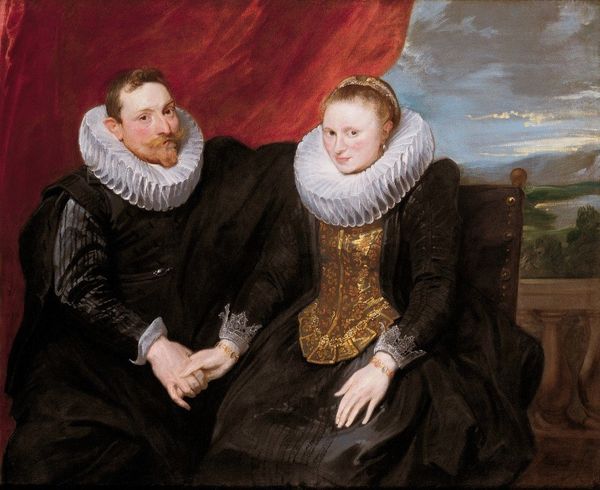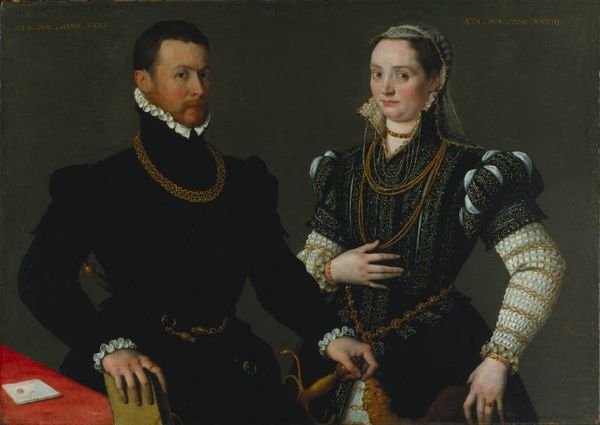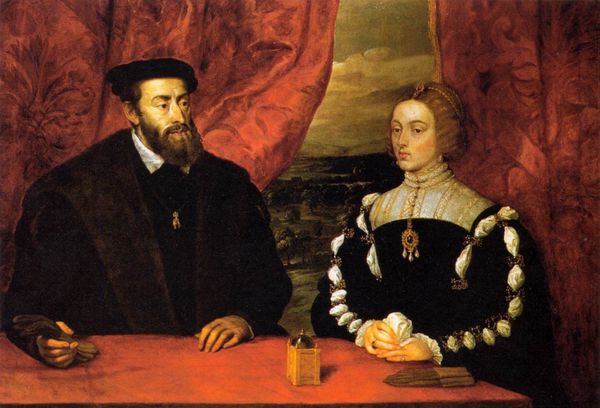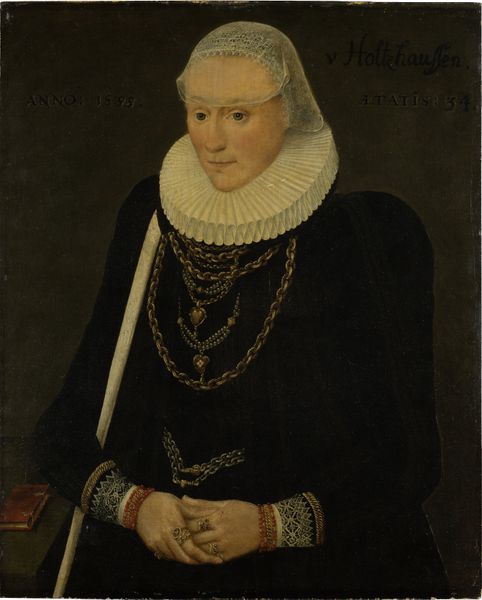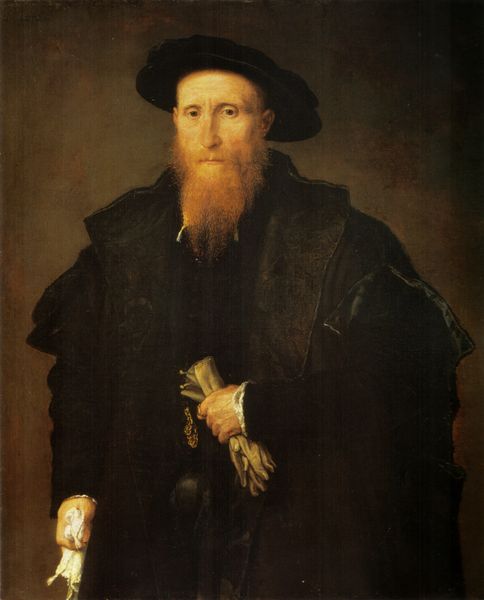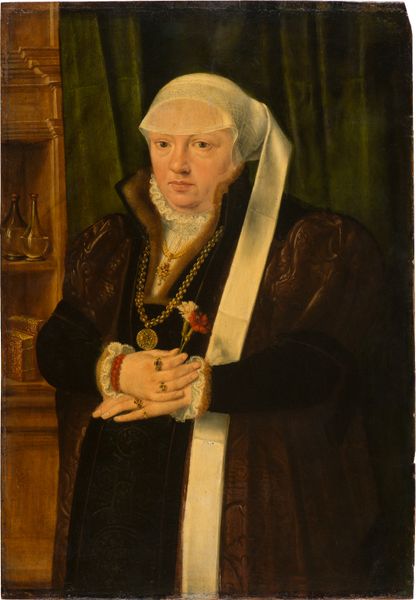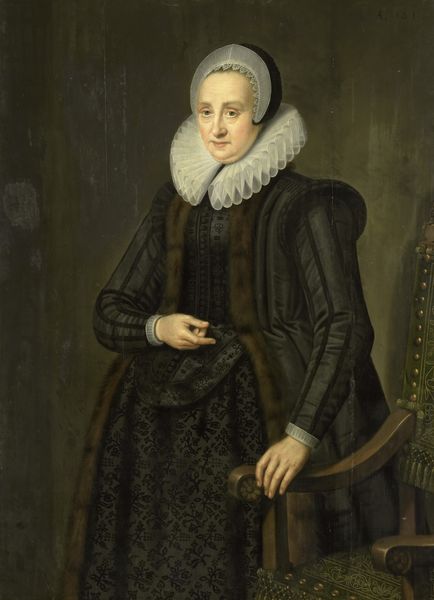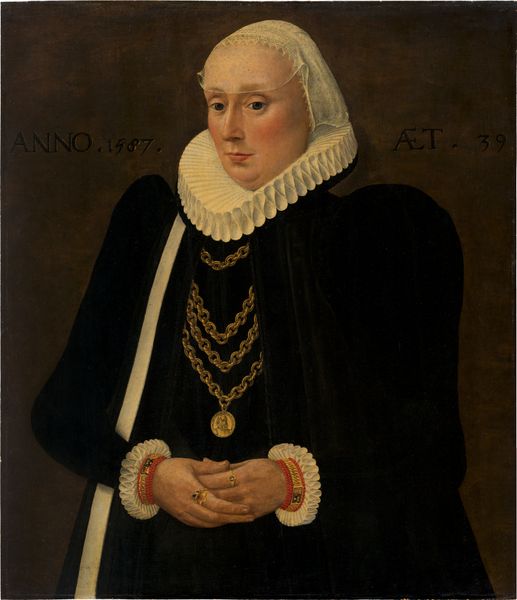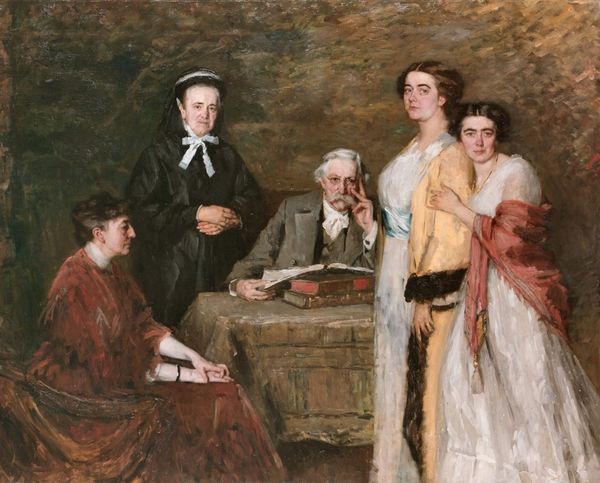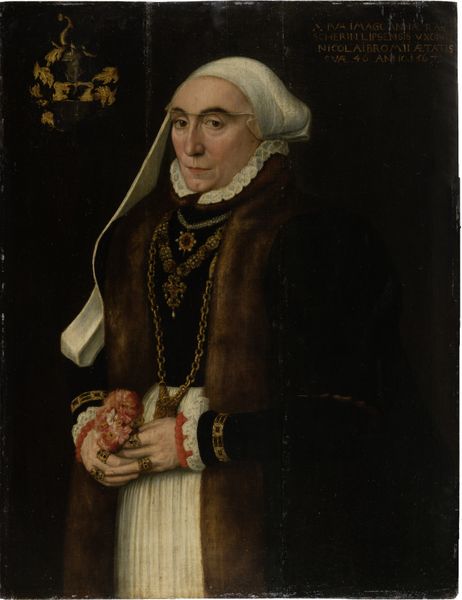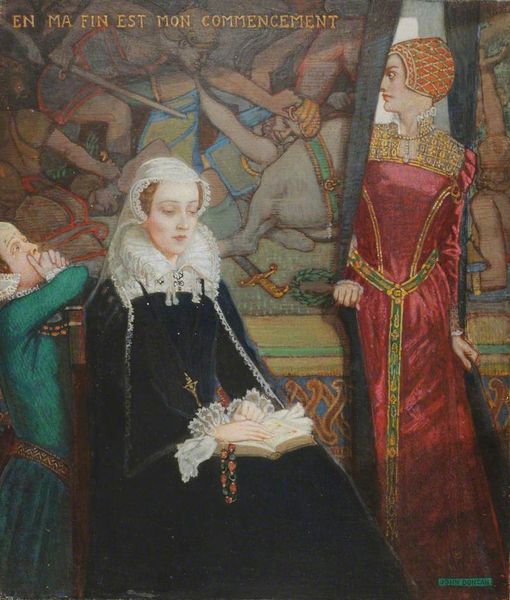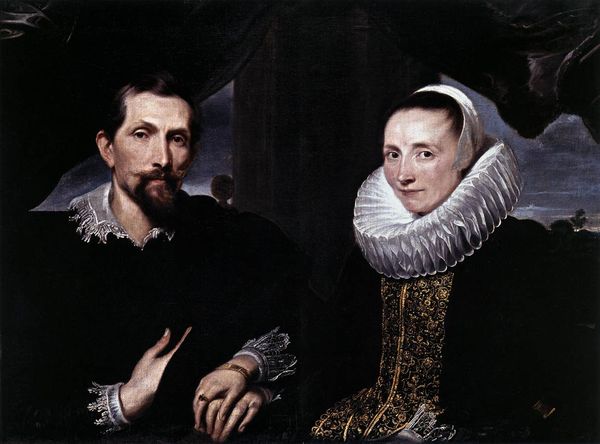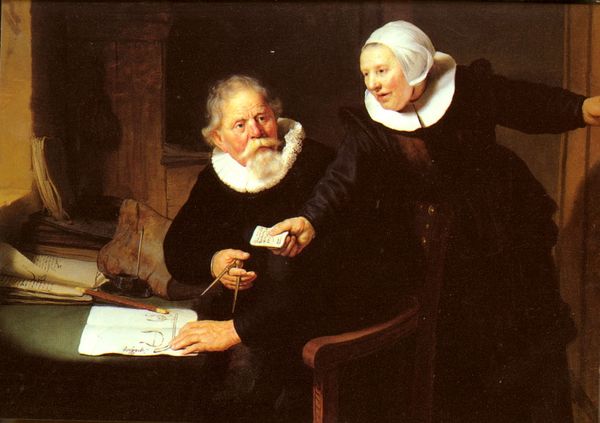
Portrait of Gillis Hooftman, Shipowner, and His Wife Margaretha Van Nispen 1570
0:00
0:00
painting, oil-paint
#
portrait
#
painting
#
oil-paint
#
figuration
#
form
#
11_renaissance
#
oil painting
#
genre-painting
#
northern-renaissance
#
academic-art
#
portrait art
Dimensions: 116 x 140.5 cm
Copyright: Public domain
Editor: Here we have Maarten de Vos’s 1570 oil painting, “Portrait of Gillis Hooftman, Shipowner, and His Wife Margaretha Van Nispen,” currently housed at the Rijksmuseum. The texture of the dark, velvety fabric they wear really stands out to me. What catches your eye in this piece? Curator: The rendering of the textiles certainly commands attention, doesn't it? I’m most interested in the process, the meticulous layering of oil paint to achieve that convincing texture. Consider the socio-economic implications here – the artist is showcasing their technical skill to portray the couple's affluence and the luxurious commodities that Antwerp was built upon. The black dye itself would have been costly, a global commodity representing status. How does the clothing strike you? Editor: Well, the detail is amazing. And I hadn’t really thought about how the clothes themselves would be signs of trade, globalization even! Does the style have something to do with that too? Curator: Absolutely. This Northern Renaissance style prioritizes detailed observation and mimetic representation, functioning almost as a ledger of material goods and social standing. De Vos has used imported materials to execute the painting that shows off imported garments, further emphasizing the flow of goods and the power of mercantile society. It’s less about some ideal “form” and more about the realities of production, exchange, and consumption that defined their world. Editor: So, looking at this portrait, we can almost reconstruct the flow of materials and the economic forces at play in 16th century Antwerp. I'll never look at old portraits the same way. Curator: Precisely. Art, especially portraiture, is rarely divorced from the realities of labor, production, and consumption. These paintings act as records, whether intended or not. They give material clues, once we look beyond the surface.
Comments
No comments
Be the first to comment and join the conversation on the ultimate creative platform.
